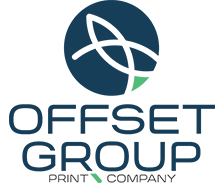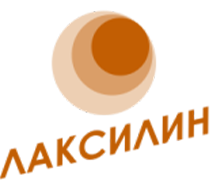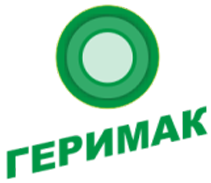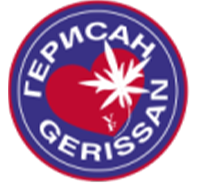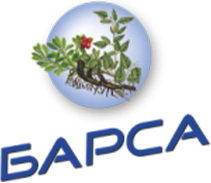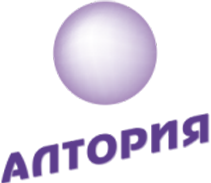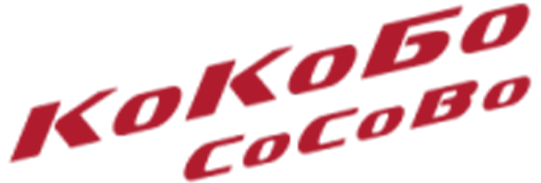Innovations in Pharmacy
Scientific research
Our research activities are an integral part of our sustainable growth. We work collaboratively with pharmacists, biochemists and regulatory authorities to develop products that meet modern standards and patient needs and are innovative in their sectors.
Highlights:
- Internal laboratory and external partnerships
- Development of formulas and test protocols
- Systematic data collection and analysis
Radioprotective effect of blood geranium polyphenols
RADIOPROTECTIVE EFFECT OF BLOOD GERANIUM POLYPHENOLS /GERANIUM SANGUINEUM - L/
Georgi Velev, St. Ivancheva 1, R Lazarov 2
Botanical Institute at BAS, Clinic of Radiology at NOC. Antiradiation effect of polyphenols from Geranium sanguineum - L. G. Velev, St. Ivancheva R. Lazarov 2.
Botanical Institute Bulgarien Academy of Sciences, Department of radiology of NOC.
The use of biologically active substances from natural products gives new opportunities to modern pharmacology. Namely, to create an alternative to synthetic preparations, which are usually very toxic. Synthetic radioprotectors such as WR- 2721, OK-78 /5/ are known. It is no coincidence that over 70% of the preparations available in US pharmacies are of natural origin. The protection of human and animal organisms from ionizing radiation has interested scientists since their discovery. The radio-modifying effect of a number of natural products has been the subject of research by many authors /1,2,3,4/. These preparations come into consideration for mass prophylaxis of people working in ionizing radiation environments.
GSis a lyophilic substrate of the extract of the rhizomes of Blood Geranium /GeraniumSanguineum- L/. It is a complex of polyphenolic compounds with the following percentage ratio between the components: tannins /20-30%/, flavonoids /0.03-0.08%/, catechins and prontocyanidins /0.15-0.25%/, polyphenolic acids /0.01-0.02%/ and ballast substances/7/.The extract is obtained after the roots are thoroughly dried to 12 % moisture, finely ground to a particle size of 0.5 mm and extraction with ethyl alcohol is carried out. Due to the fact that biologically active constituents are thermolabile, drying is done by lyophilization at 35-40°C. The resulting substance is powdery with a brownish-reddish colour and dissolves well in water and alcohol.
The aim of the present study was to evaluate the radioprotective potential of polyphenols contained in the standard GS preparation derived from blood geranium roots. To achieve the aim, standard radiobiological methodology was used for rodent survival, leukocyte, granulocyte lymphocyte and platelet studies in peripheral blood of rats, phagocytic activity of neutrophils, study of major cell populations in cancer patients undergoing radiotherapy.
MATERIALS AND METHODS
- Experienced animals
Survival experiments, endogenous splenic colonies / E - KOE g/ and phagocytic activity of neutrophils were performed with white inbred male mice with a body mass of 20-25 g. The study regarding peripheral blood indices was performed with male Wistar rats of 150 -170 g body mass.
A clinical trial of GSSwas conducted at the NSC in cancer patients undergoing radiotherapy. The group consisted of 12 people and the control of 11.
- Application of the preparation.
Experimental mice were administered an aqueous solution of the lyophilizate via a metal probe at doses of 30 mg/kg body weight for 5 consecutive days before irradiation. The rats were also administered by metal probe, but in doses of 5 mg/kg bw. Cancer patients took it in the form of capsules on an empty stomach 150 mg/day /~2.5 mg/kg/ starting 10 days before the start of irradiations and continuing throughout the course of treatment.
Irradiation. The mice were irradiated with a 10-Gu gamma-irradiator "Beam -
1300″ with four sources, 60Coand power 1.3 u/min. The Wistar rats were irradiated with 4Gy of the same gamma-irradiator.
Cancer patients were treated with ionizing radiation in conventional doses and volume.
EXPERIMENTS AND EXPERIMENTAL GROUPS
We used four groups of 20 experimental animals in the follow-up of survival of mice acutely irradiated with 10 Gugama-rays.
Group 1 was watered with GS solution at a dose of 30 mg/kg using a metal probe for five consecutive days before irradiation. Prophylactic administration schedule.
A second group took the same dose for five consecutive days, but after irradiation. Therapeutic administration schedule.
The two control groups were watered with distilled water - one before, the other after irradiation - in parallel with the experimental groups.
Dynamic monitoring of blood parameters was performed in two groups of Wistar rats, one of which was watered with a solution of the lyophilizate GSS for five consecutive days before irradiation with 4 Gugama rays at doses of 5 mg/kg body weight, and the control with distilled water. We monitored leukocytes, granulocytes and lymphocytes. We also traced platelets in dynamics.
The cancer patients in whom we followed the major leukocyte populations, administering radiotherapy and taking GSS as radioprotector were 12. Their mean age was 47.3 years - 6 men and 6 women. The patients were divided according to the following nosological entities: four patients were treated for Hodgkin's disease, four for uterine tumours, one for rectal tumours, one for lung tumours, one for nasopharyngeal tumours and one for brain tumours. In the control group, four patients had Hodgkin's disease, two had non-Hodgkin's lymphomas, two had tongue tumors, one had a nasopharyngeal tumor, one had a uterine tumor, and one had a breast tumor. Or, the control group was eleven patients in total who underwent radiotherapy alone.
METHODS
- Survivability
We tracked survival in mice at 3-™ , 70-™ 16-™ , 23-™ , 30-™ days after irradiation with 10 Gugama - rays, in prophylactic and therapeutic administration schedule of GS.
- Endogenous splenic colonies /E - COE g/ were determined by the method of J. Till, E. Mc. Kulloch, L. Siminovitch. We used five groups of mice, in each of which there were 20 animals. We administered preventively for 5 consecutive days GSin doses as follows: group I - 30 mg/kg body weight, group II - 20 mg/kg, group III - 10 mg/kg, group IV - 5 mg/kgand group V - control, which we watered with distilled water. On the fifth day we irradiated with 10 Gugama - rays and on the eighth day after irradiation we removed the spleens on which we counted endogenous splenic colonies.
- Monitoring of peripheral blood haematological parameters: leucocytes, granulocytes, lymphocytes, platelets in male Wistar rats with a body mass of 150-170 g. GSbe administered prophylactically for five consecutive days at 5 mg/kgbody mass, after which we irradiated the treatment and control groups with 4 GS. We monitored hematological parameters in dynamics. Phagocytic activity was determined in labeled by 14 With a 20-hour culture of Escherichia coli cultured in a monolayer /8/ 14 C Enchiasi was obtained after incubation of a bacterial culture in Timakov's medium containing as radioactive markers 14 With thymine and 14 S acenin. Isolation of neutrophils by NH4Cl-isotopic solution was performed, followed by threefold gradient centrifugation and washing of the cell suspension with Henk's solution. The resulting neutrophils had preserved vitality. Incubation was carried out for 1 hour at 37°C in a neutrophil/Echerichtacoli1:10 ratio, after which the activity not included in the monolayer was removed by washing four times with saline. Lysis of the cells was performed with 0.15 % of sodium lauryl sulfate, scintillation cocktail was added, and the ?-activity was measured on a liquid scintillation counter. Phagocytosis is calculated as a percentage of baseline activity for 1.106 cells.
RESULTS AND DISCUSSION
Working and control groups of 20 experimental animals each. We watered the working group with GS30 mg/kgbody weight for five consecutive days before and after 3 Gy irradiation, and we watered the control with distilled water.
I. Effect of GSon survival of mice after acute irradiation.
The results of the mouse survival follow-up showed a statistically significant difference in the prophylactic treatment group at 16″™, 23″™ and 30″1и day after irradiation. This is most likely due to three factors: stimulation of hematopoiesis /all cell lines/, the presence of potent antioxidants such as flavonoids, anthocyanins, polyphenolic acids, etc. and increased phagocytic activity of neutrophils /30″You Day 1 survivors of prophylactically treated animals were 63% ±5.1% and control 33% ±4.5%/.
In the treatment group, we obtained a statistically significant difference at I6″™1 day. Survivors were 55% ±5.3% for the experimental group and 38% ±4.6% for the control.
II. Tracking of endogenous splenic colonies /E-CoEd/
At Dyou group, to which we administered GSat doses of 40 mg/kg body weight, we obtained a mean number of E-CoEd 7.17 ±1.34, II 'ra group 30 mg/kg- 6.57 ±0.83, PGta Group 20 mg/kg- 3.29±0.41, Group IV'™ 10 mg/kg- 1.80±0.33. In control group we did not find splenic colonies. The preparation probably either promotes greater preservation of stem cells after irradiation or accelerates their proliferation or modifies both processes resulting in faster ?recovery of hematopoiesis after irradiation./1/
III. Effect of GSon the haemopoiesis of Wistar rats.
We monitored blood parameters, namely leukocytes, granulocytes, lymphocytes and platelets. We irradiated the experimental group of animals with 5 mg/kgbody weight with GS, then irradiated in a gamma irradiator with 4 sources 60Co at doses of 4 Gy/the extrapolation coefficient of rat/mouse was 0.157/ In the first 10 days after irradiation, the leukocytes of the working group were higher than those of the control, and at 23′thia day the difference is statistically significant. Platelets in the treatment group had higher values than those of the control, except at 5″til day, here we find no statistically significant difference.
'BLOOD GERANIUM' STUDY'
FIRST GROUP - LEU. OR, L.Y,
IV. Effect of GSon the phagocytic activity of neutrophils.
Neutrophil granulocytes are among the most sensitive blood cells to ionizing radiation. The applied radioisotope method gives us an inferential assessment of the functional state of phagocytosing neutrophils.
GShowed, administered in a prophylactic-therapeutic scheme, a statistically significant difference. The data for the control was 7.21% ±1.53%, the working group treated with GS10.67% ±1.61%.
These results give us reason to believe that GShas a definite stimulatory effect on phagocytizing neutrophils.
V. Effect of GSon T lymphocytes in cancer patients undergoing radiotherapy.
The administration of GS stimulated selectively the T-lymphocyte population, expressed in statistically significant ranges when compared with the control group. Observed changes in the percentage of total lymphocytes showed no correlation with dynamics in any particular T-lymphocyte subpopulation. The ratios of T helper/inducers and T cytotoxic/suppressors remained constant. The analysis of other lymphocyte subpopulations - total: B-lymphocytes, NK-cells did not show statistically significant differences. At this stage of the study, the effect of the administration of GSis reported as positive. Preservation of the T-lymphocyte population, which is responsible for the cellular immune response in ocular patients, is of particular importance.
FINDINGS
- GRsignificantly increased survival in mice irradiated with lethal doses;
- GRpositively affects hematopoiesis in rats, helps to restore peripheral blood indicators faster;
- GR significantly affects the amount of endogenous splenic colonies /E-CoEd/;
- GRpositively affects neutrophil population function. The FA of the GS-treated groupwas statistically significantly higher compared with the control group.
- The administration of GS in cancer patients undergoing radiotherapy showed preservation of the T-lymphocyte population, which determines the usefulness of its concomitant administration in this case. These results also determine the possibility of G50C↩Sto be administered prophylactically in contingents working in environments with ionizing radiation.
SUMMARY
The development of standardized preparations of natural products having radioprotective effects is becoming increasingly important in the prophylaxis of contingents receiving higher doses of ionizing radiation or the potential to receive such doses. In the first group we refer to:
- Cancer patients undergoing radiotherapy.
- The groups that carry out the refuelling of the reactors in a nuclear power plant.
- Military formations located at "hot" spots on the planet where nuclear munitions of some kind are used.
The second group are:
3. Those working at the NPP and those living nearby.
The idea of this study is to obtain a standard preparation with a radoprotective effect, with low or practically absent toxicity, which can be taken for a long time. The synthetic radioprotectors used at home and abroad / WR- 2721, OK - 78 / are highly toxic and this does not allow their long-term application. The standard product, obtained after gradual extraction with ethyl alcohol and subsequent freeze-drying, called "Gerisan" /GS/, was studied mainly in a prophylactic scheme of administration to mice irradiated with 10 Gugama rays. We monitored endogenous splenic colony survival and phagocytic activity. We applied a prophylactic-therapeutic regimen to rats irradiated with 4 Gugama beams, on which we examined blood parameters.
We have also applied GS to cancer patients undergoing radiotherapy. GS, administered prophylactically, increased postradiation survival in mice, promoted postradiation recovery of hematopoiesis in rats, and influenced the rapid recovery of T lymphocytes in cancer patients undergoing radiotherapy.
Key words: ionizing radiation, radioprotection, GeraniumSanguineum, hematopoiesis, phagocytic activity.
Preliminary study of the APEGRA prefix
The preparation was administered at a dose of 3 times 2 capsules daily for 30 days, then continued with a maintenance dose of 2 times 1 capsule for another 60 days.
Before , during and at the end of treatment the following parameters were monitored:
1. International Prostate Index / I- PSS / at baseline, day 30 and end of treatment.
2. Prostate gland size measured by ultrasound ultrasonography in cubic centimeters at the beginning and end of treatment.
3. Uroflowmetry - at the beginning, 20th day and at the end of treatment.
4. PSA- at the beginning and at the end of treatment.
OUTCOMES:
1. After initiation of treatment, improvement in clinical symptoms was observed in 25 patients /50%/ by day 20, and by the end of treatment observation - day 90 in 35 patients /70%/, which was reported by the international prostate score/1 - PSS/ .
" required>
A PRELIMINARY STUDY OF THE PREPARATION "APEGRA" IN PATIENTS WITH BENIGN PROSTATIC HYPERPLASIA IN OUTPATIENT SETTINGS
CONDITIONS
APEGRA contains a standardized extract of the fruit of the Celery plant, obtained by cold technology in order to preserve a high concentration of biologically active substances.Active ingredients are: essential oil, phenols; flavonoids, amino acids, vitamin E, vitamin A, vitamins of the B group and others.
STUDY OBJECTIVE:
Impact of lower urinary tract symptoms in patients with benign prostatic hyperplasia in an outpatient setting on long-term APEGRA administration.
MATERIAL AND METHOD:
For a period of one year in the urology office at the medical center "Uroelit" in. 50 patients with symptoms of benign prostatic hyperplasia were followed up for a one-year period. The average age was 67 years. Patients with mild to moderate symptoms of BPH were selected /1 - PSSto 7/.
The preparation was administered at a dose of 3 times 2 capsules daily for 30 days, then continued with a maintenance dose of 2 times 1 capsule for another 60 days.
Before , during and at the end of treatment the following parameters were monitored:
1. International Prostate Index / I- PSS / at baseline, day 30 and end of treatment.
2. Prostate gland size measured by ultrasound ultrasonography in cubic centimeters at the beginning and end of treatment.
3. Uroflowmetry - at the beginning, 20th day and at the end of treatment.
4. PSA- at the beginning and at the end of treatment.
OUTCOMES:
1. After initiation of treatment, improvement in clinical symptoms was observed in 25 patients /50%/ by day 20, and by the end of treatment observation - day 90 in 35 patients /70%/, which was reported by the international prostate score/1 - PSS/ .
Gerisan Study
The beginning was in 1989.
Then the idea of creating a product from this medicinal plant was born, as it was found that over 60% of the experimental animals previously watered with the extract of the roots of blood geranium (Geranium sanguineum) and then irradiated with lethal doses of ionizing radiation remained alive. To find optimal doses and administration schedules, scientific experimental work was conducted for 5-6 years using over 6000 white, breedless mice, over 3000 rats, a breed called "Wistar", over 1000 guinea pigs, 20 dogs. The scientific work was conducted in the scientific-experimental bases of the Military Medical Academy and the Bulgarian Academy of Sciences. The production technology was developed in the development base of Sopharma.
The standardized substance was tested at the Cancer Institute in Munich - Germany for its anticarcinogenic effect. The results showed that "Gerisan" has a more potent anticarcinogenic effect than some chemotherapeutics such as myotefosine - in colon cancer, laryngeal cancer and breast cancer.
The anti-radiation effect of "Gerisan" was clinically studied at the National Cancer Center - Sofia. Thirty patients who were undergoing radiotherapy and taking "Gerisan" at the same time were studied. The results showed that all patients completed the radiotherapy course without any drop in leukocytes below the critical minimum.
The natural celery fruit product was developed over a period of three years. Many difficulties in the technological process were overcome. Initial clinical trials were conducted on 10 people with urinary problems. These were men over 65 years of age who reported getting up 4-5 times during the night to urinate. After a one-week course, 7 of the 10 reported that the stream when urinating had increased visibly and that they only got up 1-2 times at night.
An increase in testosterone titer was also found, which explains the increased sexuality in the man, as well as the gain in muscle mass.


